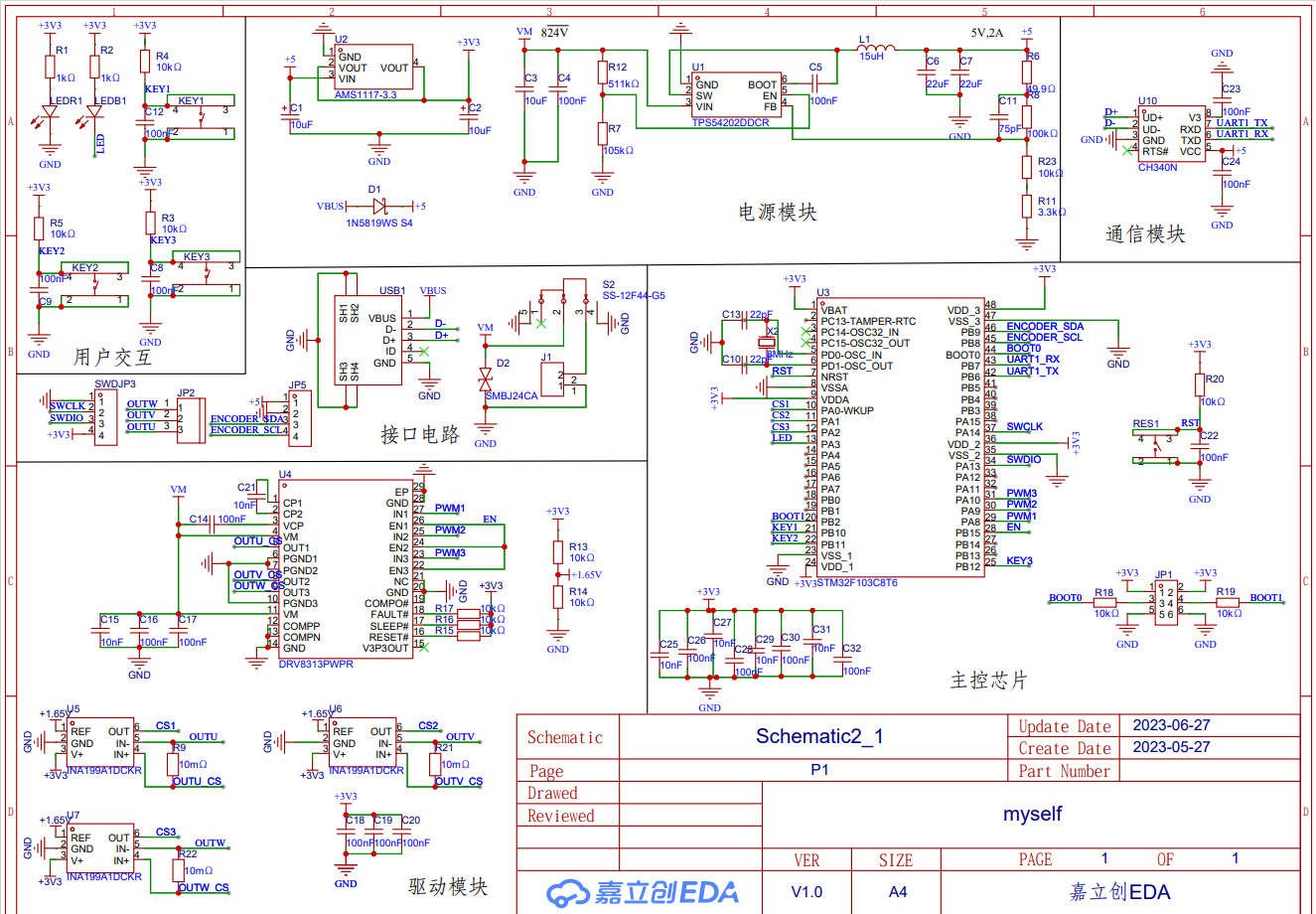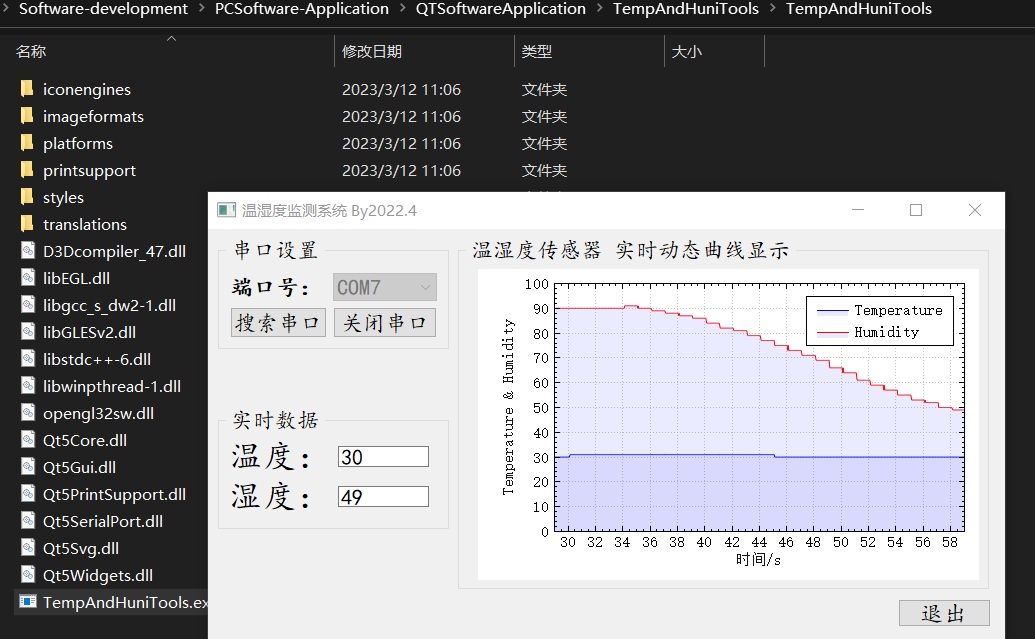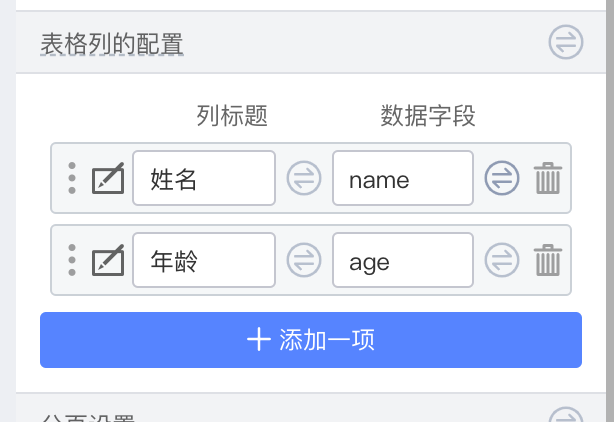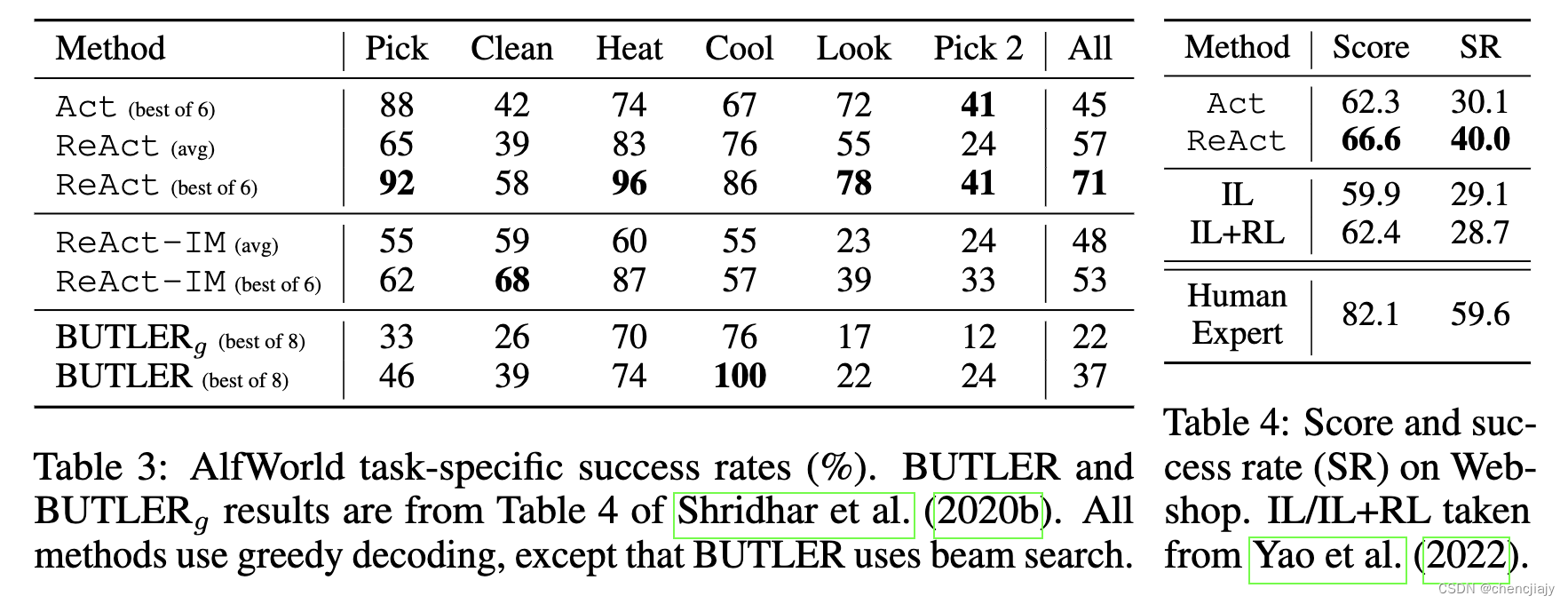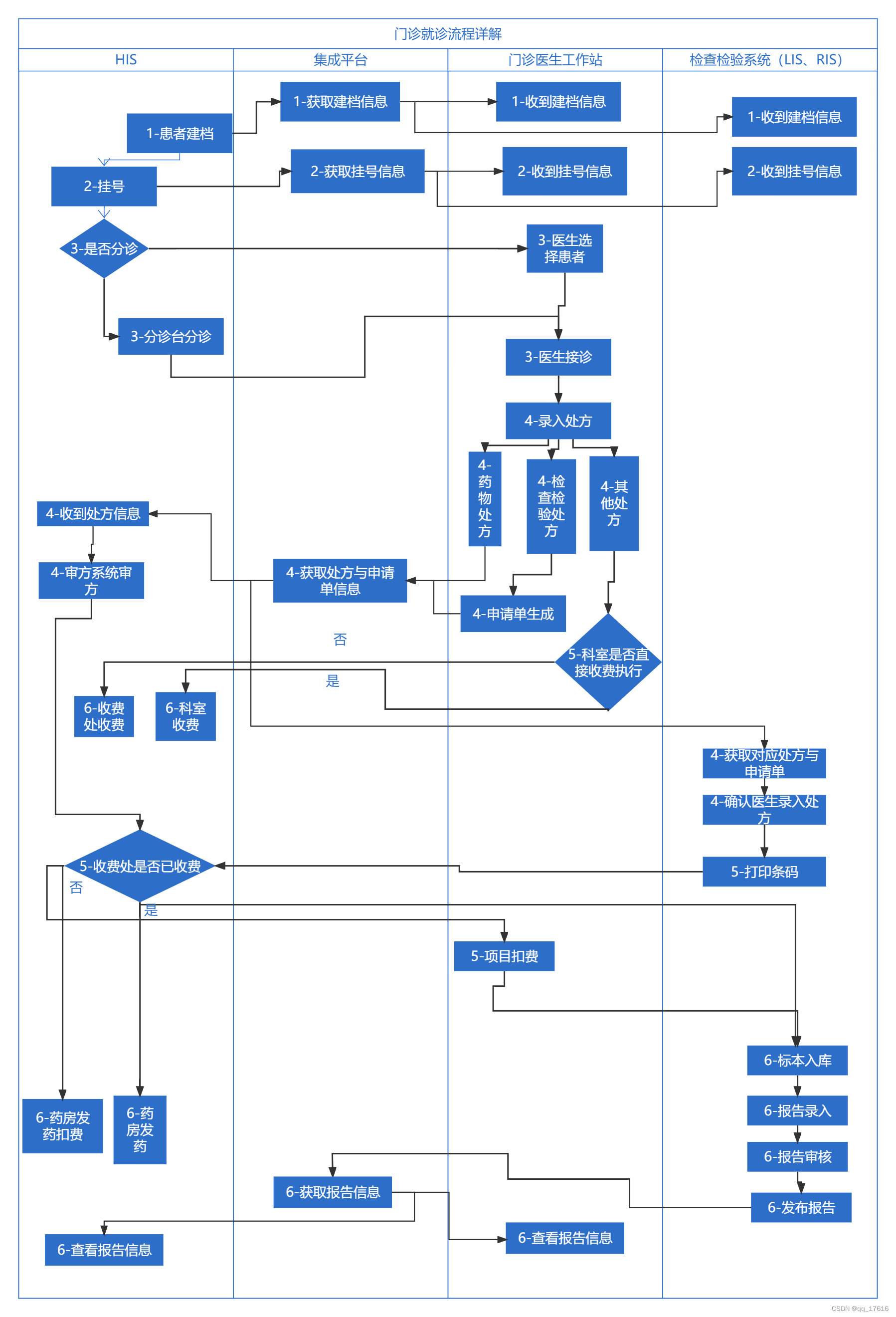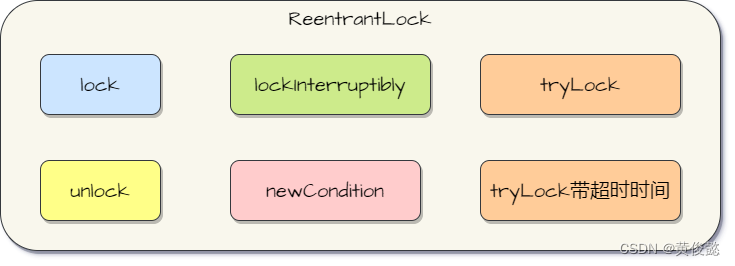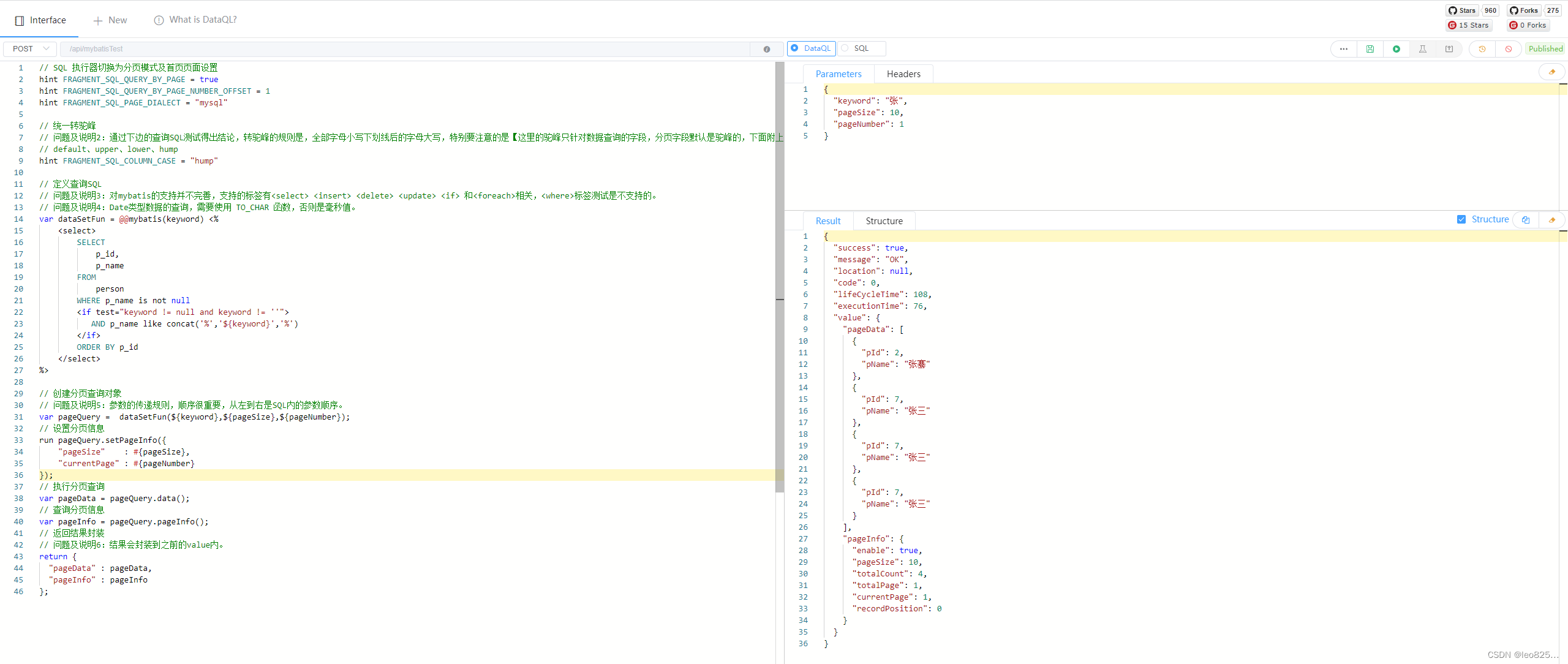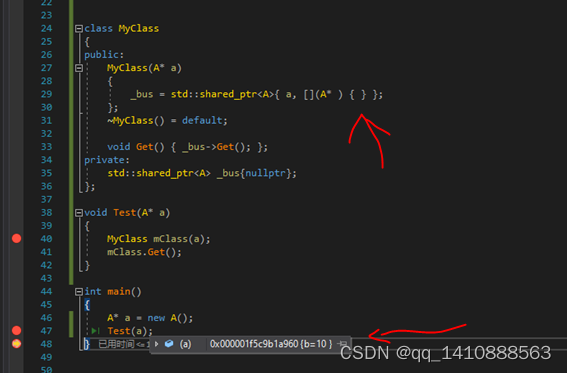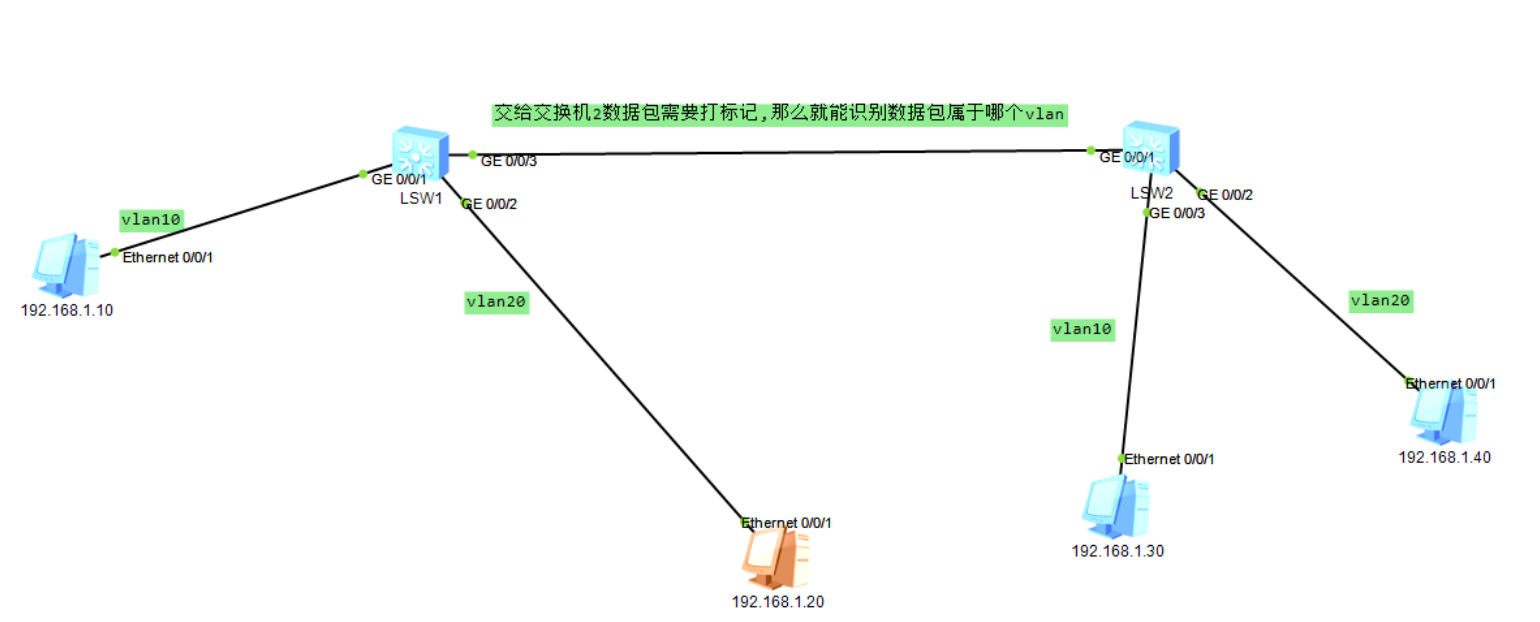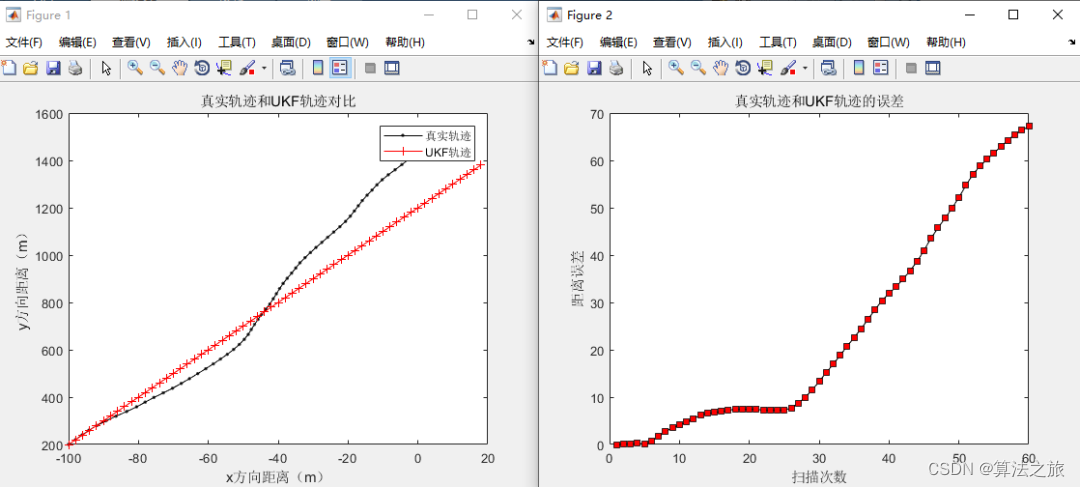本文章内容参考自:
W3school XSD 教程
Extensible Markup Language (XML) 1.0 (Second Edition)
XML Schema 2001
XML Schema Part 2: Datatypes Second Edition
文章目录
- 1、XSD 是什么
- 2、XSD 内置数据类型 - built-in datatypes
- 2.1、基本数据类型 19 种
- 2.1.1、基本字符串类型 1 种
- 2.1.1.1、字符串 - string 简单类型
- 2.1.2、基本数值类型 3 种
- 2.1.2.1、十进制数 - decimal 简单类型
- 2.1.2.2、单精度浮点数 - float 简单类型
- 2.1.2.3、双精度浮点数 - double 简单类型
- 2.1.3、日期时间类型 9 种
- 2.1.3.1、日期 - date 简单类型
- 2.1.3.2、时间 - time 简单类型
- 2.1.3.3、日期时间 - dateTime 简单类型
- 2.1.3.4、年 - gYear 简单类型
- 2.1.3.5、年和月 - gYearMonth 简单类型
- 2.1.3.6、月 - gMonth 简单类型
- 2.1.3.7、月和天 - gMonthDay 简单类型
- 2.1.3.8、天 - gDay 简单类型
- 2.1.3.9、周期 - duration 简单类型
- 2.1.4、布尔类型 1 种
- 2.1.4.1、布尔 - boolean 简单类型
- 2.1.5、编码二进制类型 2 种
- 2.1.5.1、Base64 编码 - base64Binary 简单类型
- 2.1.5.2、十六进制编码 - hexBinary 简单类型
- 2.1.6、其他基本数据类型 3 种
- 2.1.6.1、统一资源标识符 - URI 简单类型
- 2.1.6.2、限定名 - QName 简单类型
- 2.1.6.3、实体标记 - NOTATION 简单类型
- 2.2、派生数据类型 25 种
- 2.2.1、派生字符串类型 12 种
- 2.2.1.1、名称标记 - NMTOKEN 简单类型
- 2.2.1.2、用户定义名称 - NCName 简单类型
- 2.2.1.3、实体 - ENTITIE 简单类型
- 2.2.2、派生数值类型 13 种
- 3、派生类型
- 3.1、扩展派生类型 - extension 元素
- 3.2、限制派生类型 - restriction 元素
- 3.3、简单类型的扩展和限制 - simpleContent 元素
- 3.4、复合类型的扩展和限制 - complexContent 元素
- 3.5、集合派生类型
- 4、XSD 简单类型 - simpleType 元素
- 4.1、简单元素 - element 元素
- 4.2、属性 - attribute
- 4.3、限定 12 种 - facet 类型
- 4.3.1、有序限定 4 种
- 4.3.1.1、左开区间 - minExclusive 元素
- 4.3.1.2、左闭区间 - minInclusive 元素
- 4.3.1.3、右开区间 - maxExclusive 元素
- 4.3.1.4、右闭区间 - maxInclusive 元素
- 4.3.2、数值限定 5 种
- 4.3.2.1、总位数 - totalDigits 元素
- 4.3.2.2、小数位数 - fractionDigits 元素
- 4.3.2.3、长度 - length 元素
- 4.3.2.4、最小长度 - minLength 元素
- 4.3.2.5、最大长度 - maxLength 元素
- 4.3.3、非固定值限定 2 种
- 4.3.3.1、枚举值限定 - enumeration 元素
- 4.3.3.2、字符串匹配模式 - pattern 元素
- 4.3.4、空白字符限定 1 种
- 4.3.4.1、空白字符处理 - whiteSpace 元素
- 5、XSD 复合类型 - complexType 类型和 complexType 元素
- 复合类型指示器
- Occurrence 指示器 - occurs 属性组
- minOccurs 属性
- maxOccurs 属性
- Order 指示器
- all 元素
- choice 元素
- sequence 元素
- Group 指示器
- 元素组 - group 元素
- 属性组 - attributeGroup 类型
- 复合元素 - element 元素
- 通配符类型 wildcard
- 任何元素 - any 元素
- 任何属性 - anyAttribute 元素
- 注释 - annotation 元素
1、XSD 是什么
XSD(XML Schema Definition)用来描述 XML 文档的结构,是 DTD 的替代者,功能比 DTD 更强大。
-
XML Schema 基于 XML 编写
- 可扩展
- 可以通过 XML 解析器来解析 Schema 文件
- 可以通过 XML DOM 来处理 Schema
- 可以通过 XSLT 来转换 Schema
-
XML Schema 支持数据类型
- 可更容易地验证数据的正确性
- 可以更容易地定义数据格式
- 可以更容易地定义数据约束(data facets)
- 可以更容易地在不同的数据类型间转换数据
通过 XML Schema,数据的发送方可以用一种接收方能够理解的方式来描述数据。
例如 “03-11-2004”,在某些国家被解释为 11 月 3 日,而在另一些国家被解释为 3 月 11 日。
但是一个带有数据类型的 XML 元素 <date type="date">2004-03-11</date>,可以确保对数据内容的一致理解,这是因为 XML 数据类型 xs:date 要求的格式是 YYYY-MM-DD。
XML Schema 在 2001 年 5 月 2 日成为 W3C 标准。
2、XSD 内置数据类型 - built-in datatypes
XSD 规定 schema 的数据类型包括 44 种内置的数据类型(built-in datatypes)和用户派生的数据类型(user-derived datatypes)。
44 种内置类型包括 19 种从 anySimpleType 派生的基本类型(primitive datatypes)和 25 种从基本类型派生的派生基本类型(derived primitive types)。
19 种基本类型包括:
- 1 种字符串类型 string
- 3 种数值类型 decimal、float、double
- 9 种日期时间类型 date、time、datetime、gYear、gYearMonth、gMonth、gMonthDay、gDay 以及周期类型 duration
- 1 种布尔类型 boolean
- 2 种编码二进制类型 base64Binary、hexBinary
- 3 种其他类型 anyURI、QName、NOTATION
25 种派生类型又包括 12 种字符串派生类型以及 13 种数值派生类型。如下图示:

2.1、基本数据类型 19 种
2.1.1、基本字符串类型 1 种
| 数据类型 | 派生类型 | 限制 | 描述 |
|---|---|---|---|
| xs:string | anySimpleType 类型 | whiteSpace="preserve" | 字符串。XML 处理器不会做任何处理,保留空格、换行、回车以及制表符 |
2.1.1.1、字符串 - string 简单类型
2.1.2、基本数值类型 3 种
| 数据类型 | 派生类型 | 限制 | 描述 |
|---|---|---|---|
| xs:decimal | anySimpleType 类型 | whiteSpace="collapse"、fixed="true" | 十进制数。最大位数是 18 位。例如 -999.52 |
| xs:float | anySimpleType 类型 | whiteSpace="collapse"、fixed="true" | 32 位单精度浮点数 |
| xs:double | anySimpleType 类型 | whiteSpace="collapse"、fixed="true" | 64 位双精度浮点数 |
2.1.2.1、十进制数 - decimal 简单类型
2.1.2.2、单精度浮点数 - float 简单类型
2.1.2.3、双精度浮点数 - double 简单类型
2.1.3、日期时间类型 9 种
| 数据类型 | 派生类型 | 限制 | 描述 |
|---|---|---|---|
| xs:date | anySimpleType 类型 | whiteSpace="collapse"、fixed="true" | YYYY-MM-DD |
| xs:time | anySimpleType 类型 | whiteSpace="collapse"、fixed="true" | hh:mm:ss |
| xs:dateTime | anySimpleType 类型 | whiteSpace="collapse"、fixed="true" | YYYY-MM-DDThh:mm:ss,T 表示时间部分的起始 |
| xs:gYear | anySimpleType 类型 | whiteSpace="collapse"、fixed="true" | 定义日期时间的一个部分 - 年 (YYYY) |
| xs:gYearMonth | anySimpleType 类型 | whiteSpace="collapse"、fixed="true" | 定义日期时间的一个部分 - 年和月 (YYYY-MM) |
| xs:gMonth | anySimpleType 类型 | whiteSpace="collapse"、fixed="true" | 定义日期时间的一个部分 - 月 (MM) |
| xs:gMonthDay | anySimpleType 类型 | whiteSpace="collapse"、fixed="true" | 定义日期时间的一个部分 - 月和天 (MM-DD) |
| xs:gDay | anySimpleType 类型 | whiteSpace="collapse"、fixed="true" | 定义日期时间的一个部分 - 天 (DD) |
| xs:duration | anySimpleType 类型 | whiteSpace="collapse"、fixed="true" | PnYnMnDTnHnMnS,n 表示年月日时分秒的数目,P 表示周期,T 表示时间部分的起始。例如 P5Y2M10DT15H 表示 5 年零 2 个月零 10天 零 15 小时 |
2.1.3.1、日期 - date 简单类型
2.1.3.2、时间 - time 简单类型
2.1.3.3、日期时间 - dateTime 简单类型
2.1.3.4、年 - gYear 简单类型
<xs:simpleType name="gYear" id="gYear">
<xs:annotation>
<xs:appinfo>
<hfp:hasFacet name="pattern"/>
<hfp:hasFacet name="enumeration"/>
<hfp:hasFacet name="whiteSpace"/>
<hfp:hasFacet name="maxInclusive"/>
<hfp:hasFacet name="maxExclusive"/>
<hfp:hasFacet name="minInclusive"/>
<hfp:hasFacet name="minExclusive"/>
<hfp:hasProperty name="ordered" value="partial"/>
<hfp:hasProperty name="bounded" value="false"/>
<hfp:hasProperty name="cardinality" value="countably infinite"/>
<hfp:hasProperty name="numeric" value="false"/>
</xs:appinfo>
<xs:documentation source="http://www.w3.org/TR/xmlschema-2/#gYear"/>
</xs:annotation>
<xs:restriction base="xs:anySimpleType">
<xs:whiteSpace value="collapse" fixed="true" id="gYear.whiteSpace"/>
</xs:restriction>
</xs:simpleType>
[Definition]
gYear represents a gregorian calendar year. The ·value space· of gYear is the set of Gregorian calendar years as defined in § 5.2.1 of [ISO 8601]. Specifically, it is a set of one-year long, non-periodic instances e.g. lexical 1999 to represent the whole year 1999, independent of how many months and days this year has.
gYear 表示公历年。gYear 的值空间是 ISO 8601 中定义的一组公历年份。具体来说,它是一组一年长的非周期实例。例如词汇 1999,代表 1999 年全年,与该年的月份和天数无关。
2.1.3.5、年和月 - gYearMonth 简单类型
2.1.3.6、月 - gMonth 简单类型
2.1.3.7、月和天 - gMonthDay 简单类型
2.1.3.8、天 - gDay 简单类型
2.1.3.9、周期 - duration 简单类型
2.1.4、布尔类型 1 种
| 数据类型 | 派生类型 | 限制 | 描述 |
|---|---|---|---|
| xs:boolean | anySimpleType 类型 | whiteSpace="collapse"、fixed="true" | true 或 false |
2.1.4.1、布尔 - boolean 简单类型
2.1.5、编码二进制类型 2 种
| 数据类型 | 派生类型 | 限制 | 描述 |
|---|---|---|---|
| xs:base64Binary | anySimpleType 类型 | whiteSpace="collapse"、fixed="true" | Base64 编码的二进制数据 |
| xs:hexBinary | anySimpleType 类型 | whiteSpace="collapse"、fixed="true" | 十六进制编码的二进制数据 |
2.1.5.1、Base64 编码 - base64Binary 简单类型
2.1.5.2、十六进制编码 - hexBinary 简单类型
2.1.6、其他基本数据类型 3 种
| 数据类型 | 派生类型 | 限制 | 描述 |
|---|---|---|---|
| xs:anyURI | anySimpleType 类型 | whiteSpace="collapse"、fixed="true" | 转义URI |
| xs:QName | anySimpleType 类型 | whiteSpace="collapse"、fixed="true" | 由命名空间名称和本地名称组成的限定名 |
| xs:NOTATION | anySimpleType 类型 | whiteSpace="collapse"、fixed="true" | 非 XML 格式的数据 |
2.1.6.1、统一资源标识符 - URI 简单类型
2.1.6.2、限定名 - QName 简单类型
<xs:simpleType name="QName" id="QName">
<xs:annotation>
<xs:appinfo>
<hfp:hasFacet name="length"/>
<hfp:hasFacet name="minLength"/>
<hfp:hasFacet name="maxLength"/>
<hfp:hasFacet name="pattern"/>
<hfp:hasFacet name="enumeration"/>
<hfp:hasFacet name="whiteSpace"/>
<hfp:hasProperty name="ordered" value="false"/>
<hfp:hasProperty name="bounded" value="false"/>
<hfp:hasProperty name="cardinality" value="countably infinite"/>
<hfp:hasProperty name="numeric" value="false"/>
</xs:appinfo>
<xs:documentation source="http://www.w3.org/TR/xmlschema-2/#QName"/>
</xs:annotation>
<xs:restriction base="xs:anySimpleType">
<xs:whiteSpace value="collapse" fixed="true" id="QName.whiteSpace"/>
</xs:restriction>
</xs:simpleType>
[Definition]
QName represents XML qualified names. The value space of QName is the set of tuples {namespace name, local part}, where namespace name is an anyURI and local part is an NCName. The lexical space of QName is the set of strings that match the QName production of [Namespaces in XML].
限定名称由命名空间名称和本地部分组成,命名空间名称是任意 URI,而本地部分则是由用户定义的名称(NCName,non-colonized Name)。
2.1.6.3、实体标记 - NOTATION 简单类型
<xs:simpleType name="NOTATION" id="NOTATION">
<xs:annotation>
<xs:appinfo>
<hfp:hasFacet name="length"/>
<hfp:hasFacet name="minLength"/>
<hfp:hasFacet name="maxLength"/>
<hfp:hasFacet name="pattern"/>
<hfp:hasFacet name="enumeration"/>
<hfp:hasFacet name="whiteSpace"/>
<hfp:hasProperty name="ordered" value="false"/>
<hfp:hasProperty name="bounded" value="false"/>
<hfp:hasProperty name="cardinality" value="countably infinite"/>
<hfp:hasProperty name="numeric" value="false"/>
</xs:appinfo>
<xs:documentation source="http://www.w3.org/TR/xmlschema-2/#NOTATION"/>
<xs:documentation>
NOTATION cannot be used directly in a schema;
rather a type must be derived from it
by specifying at least one enumeration facet
whose value is the name of a NOTATION declared in the schema.
</xs:documentation>
</xs:annotation>
<xs:restriction base="xs:anySimpleType">
<xs:whiteSpace value="collapse" fixed="true" id="NOTATION.whiteSpace"/>
</xs:restriction>
</xs:simpleType>
[Definition : Notations identify by name the format of unparsed entities, the format of elements which bear a notation attribute, or the application to which a processing instruction is addressed.]
NOTATION 通过名称标识:
- 未解析实体的格式
- 能够帮助 XML 处理器处理实体的外部应用程序
Schema Component Constraint: enumeration facet value required for NOTATION
It is an error for NOTATION to be used directly in a schema. Only datatypes that are derived from NOTATION by specifying a value for enumeration can be used in a schema.
在 schema 中直接使用 NOTATION 类型是不合法的,只能使用通过 enumeration 限制派生后的类型。
例如:
<xs:notation name="gif" public="image/gif" system="view.exe"/>
<xs:notation name="jpeg" public="image/jpeg" system="view.exe"/>
<xs:element name="image">
<xs:complexType>
<xs:simpleContent>
<xs:attribute name="type">
<xs:simpleType>
<xs:restriction base="xs:NOTATION">
<xs:enumeration value="gif"/>
<xs:enumeration value="jpeg"/>
<xs:restriction>
</xs:simpleType>
</xs:attribute>
</xs:simpleContent>
</xs:complexType>
</xs:element>
<image type="gif"></image>
2.2、派生数据类型 25 种
2.2.1、派生字符串类型 12 种
| 数据类型 | 派生类型 | 限制 | 描述 |
|---|---|---|---|
| xs:normalizedString | string 类型 | whiteSpace="replace" | 规范化字符串。XML 处理器会移除制表符、换行以及回车 |
| xs:token | normalizedString 类型 | whiteSpace="collapse" | 标记。XML 处理器会移除制表符、换行、回车以及开头和结尾的空格,多个连续空格的内部序列会被缩减为一个空格 |
| xs:language | token 类型 | pattern="[a-zA-Z]{1,8}(-[a-zA-Z0-9]{1,8})*" | 由 RFC3066 规定的合法的语言标识 |
| xs:NMTOKEN | token 类型 | pattern="\c+",\c 表示NameChar | 名称标记 |
| xs:NMTOKENS | NMTOKEN 集合 | list itemType="xs:NMTOKEN"、minLength=1 | 名称标记集合 |
| xs:Name | token 类型 | pattern="\i\c*",\i 表示 NameStartChar,\c 表示 NameChar | 名称 |
| xs:NCName | Name 类型 | pattern="[\i-[:]][\c-[:]]*",\i 表示 NameStartChar,\c 表示NameChar | “non-colonized” Name,即用户定义名称 |
| xs:ID | NCName 类型 | 唯一标识 | |
| xs:IDREF | NCName 类型 | 唯一标识引用 | |
| xs:IDREFS | IDREF 集合 | list itemType="xs:IDREF"、minLength=1 | 唯一标识引用集合 |
| xs:ENTITIE | NCName 类型 | 实体 | |
| xs:ENTITIES | ENTITY 集合 | list itemType="xs:ENTITY"、minLength=1 | 实体集合 |
2.2.1.1、名称标记 - NMTOKEN 简单类型
<xs:simpleType name="NMTOKEN" id="NMTOKEN">
<xs:annotation>
<xs:documentation source="http://www.w3.org/TR/xmlschema-2/#NMTOKEN"/>
</xs:annotation>
<xs:restriction base="xs:token">
<xs:pattern value="\c+" id="NMTOKEN.pattern">
<xs:annotation>
<xs:documentation source="http://www.w3.org/TR/REC-xml#NT-Nmtoken">
pattern matches production 7 from the XML spec
</xs:documentation>
</xs:annotation>
</xs:pattern>
</xs:restriction>
</xs:simpleType>
pattern:
[4] NameStartChar ::= ":" | [A-Z] | "_" | [a-z] | [#xC0-#xD6] | [#xD8-#xF6] | [#xF8-#x2FF] | [#x370-#x37D] | [#x37F-#x1FFF] | [#x200C-#x200D] | [#x2070-#x218F] | [#x2C00-#x2FEF] | [#x3001-#xD7FF] | [#xF900-#xFDCF] | [#xFDF0-#xFFFD] | [#x10000-#xEFFFF]
[4a] NameChar ::= NameStartChar | "-" | "." | [0-9] | #xB7 | [#x0300-#x036F] | [#x203F-#x2040]
[5] Name ::= NameStartChar (NameChar)*
[6] Names ::= Name (#x20 Name)*
[7] Nmtoken ::= (NameChar)+
[8] Nmtokens ::= Nmtoken (#x20 Nmtoken)*
2.2.1.2、用户定义名称 - NCName 简单类型
<xs:simpleType name="NCName" id="NCName">
<xs:annotation>
<xs:documentation source="http://www.w3.org/TR/xmlschema-2/#NCName"/>
</xs:annotation>
<xs:restriction base="xs:Name">
<xs:pattern value="[\i-[:]][\c-[:]]*" id="NCName.pattern">
<xs:annotation>
<xs:documentation source="http://www.w3.org/TR/REC-xml-names/#NT-NCName">
pattern matches production 4 from the Namespaces in XML spec
</xs:documentation>
</xs:annotation>
</xs:pattern>
</xs:restriction>
</xs:simpleType>
2.2.1.3、实体 - ENTITIE 简单类型
2.2.2、派生数值类型 13 种
| 数据类型 | 描述 |
|---|---|
| xs:integer | 由 fractionDigits=0、pattern="[\-+]?[0-9]+" 限制,从 decimal 派生的整数,用于规定无小数部分的数值 |
| xs:nonPositiveInteger | 由 maxInclusive=0 限制,从 integer 派生的非正整数(0 和负整数) |
| xs:negativeInteger | 负整数 |
| xs:long | 由 minInclusive、maxInclusive 限制,从 integer 派生的有正负的 64 位整数 |
| xs:int | 有正负的 32 位整数 |
| xs:short | 有正负的 16 位整数 |
| xs:byte | 有正负的 8 位整数 |
| xs:nonNegativeInteger | 非负整数(0 和正整数) |
| xs:positiveInteger | 正整数 |
| xs:unsignedLong | 无正负的 64 位整数 |
| xs:unsignedInt | 无正负的 32 位整数 |
| xs:unsignedShort | 无正负的 16 位整数 |
| xs:unsignedByte | 无正负的 8 位整数 |
3、派生类型

3.1、扩展派生类型 - extension 元素
类型扩展即 extension 元素,定义对简单类型 simpleType 或复合类型 simpleContent、complexContent 的扩展,也就是为类型添加新的元素或属性。
<extension
id=ID
base=QName
any attributes
>
(annotation?,
((group|all|choice|sequence)?,
((attribute|attributeGroup)*,anyAttribute?)))
</extension>
使用扩展定义一个复合类型 Chinese_customer,它从复合类型 customer 派生,拥有新的子元素 country :
<xs:complexType name="customer">
<xs:sequence>
<xs:element name="name" type="xs:string"/>
</xs:sequence>
</xs:complexType>
<xs:complexType name="Chinese_customer">
<xs:complexContent>
<xs:extension base="customer">
<xs:sequence>
<xs:element name="country" type="xs:string"/>
</xs:sequence>
</xs:extension>
</xs:complexContent>
</xs:complexType>
3.2、限制派生类型 - restriction 元素
类型限制即 restriction 元素,定义对简单类型 simpleType 或复合类型 simpleContent、complexContent 的约束,并不会为类型添加新的元素或属性。
<restriction
id=ID
base=QName
any attributes
>
<!-- Content for simpleType -->
(annotation?,
(simpleType?,
(minExclusive|minInclusive|maxExclusive|maxInclusive|
totalDigits|fractionDigits|
length|minLength|maxLength|
enumeration|whiteSpace|pattern)*))
<!-- Content for simpleContent -->
(annotation?,
(simpleType?,
(minExclusive |minInclusive|maxExclusive|maxInclusive|
totalDigits|fractionDigits|
length|minLength|maxLength|
enumeration|whiteSpace|pattern)*)?,
((attribute|attributeGroup)*,anyAttribute?))
<!-- Content for complexContent -->
(annotation?,
(group|all|choice|sequence)?,
((attribute|attributeGroup)*,anyAttribute?))
</restriction>
例如使用约束定义一个复合类型 Chinese_customer,它从复合类型 customer 派生,子元素 country 的固定值是 “China”:
<xs:complexType name="customer">
<xs:sequence>
<xs:element name="name" type="xs:string"/>
<xs:element name="country" type="xs:string"/>
</xs:sequence>
</xs:complexType>
<xs:complexType name="Chinese_customer">
<xs:complexContent>
<xs:restriction base="customer">
<xs:sequence>
<xs:element name="name" type="xs:string"/>
<xs:element name="country" type="xs:string" fixed="China"/>
</xs:sequence>
</xs:restriction>
</xs:complexContent>
</xs:complexType>
3.3、简单类型的扩展和限制 - simpleContent 元素
simpleContent 元素是对简单类型 simpleType 元素的扩展或限制,简单类型扩展后会变成复合类型。
<xs:element name="simpleContent" id="simpleContent">
<xs:annotation>
<xs:documentation source="http://www.w3.org/TR/xmlschema-1/#element-simpleContent"/>
</xs:annotation>
<xs:complexType>
<xs:complexContent>
<xs:extension base="xs:annotated">
<xs:choice>
<xs:element name="restriction" type="xs:simpleRestrictionType"/>
<xs:element name="extension" type="xs:simpleExtensionType"/>
</xs:choice>
</xs:extension>
</xs:complexContent>
</xs:complexType>
</xs:element>
例如对简单类型 integer 进行扩展后获得一个复合类型 shoesize,其内容被定义为整数数据类型,并包含一个 country 属性:
<xs:element name="shoesize">
<xs:complexType>
<xs:simpleContent>
<xs:extension base="xs:integer">
<xs:attribute name="country" type="xs:string" />
</xs:extension>
</xs:simpleContent>
</xs:complexType>
</xs:element>
3.4、复合类型的扩展和限制 - complexContent 元素
complexContent 元素定义对复合类型 complexType 元素的扩展或限制。
<xs:element name="complexContent" id="complexContent">
<xs:annotation>
<xs:documentation source="http://www.w3.org/TR/xmlschema-1/#element-complexContent"/>
</xs:annotation>
<xs:complexType>
<xs:complexContent>
<xs:extension base="xs:annotated">
<xs:choice>
<xs:element name="restriction" type="xs:complexRestrictionType"/>
<xs:element name="extension" type="xs:extensionType"/>
</xs:choice>
<xs:attribute name="mixed" type="xs:boolean"/>
</xs:extension>
</xs:complexContent>
</xs:complexType>
</xs:element>
3.5、集合派生类型
4、XSD 简单类型 - simpleType 元素
simpleType 元素定义一个简单类型,规定与
- 仅包含文本内容的元素
- 或 属性 的值有关的信息
- 以及对它们的 约束
<simpleType id=ID name=NCName anyAttribute>
(annotation?,(restriction|list|union))
</simpleType>
例如声明 age 元素是一个带有约束(restriction)的简单类型(age 元素的值不能小于 0 或大于 100):
<xs:element name="age">
<xs:simpleType>
<xs:restriction base="xs:integer">
<xs:minInclusive value="0"/>
<xs:maxInclusive value="100"/>
</xs:restriction>
</xs:simpleType>
</xs:element>
4.1、简单元素 - element 元素
简单元素指那些仅包含文本内容的元素,它不包含任何其他的元素或属性。
不过,“仅包含文本内容” 这个限定却很容易造成误解。文本内容有很多种类型,它可以是 XML Schema 定义类型中的一种(布尔、字符串、数值等),它也可以是自定义的定制类型。
可以向数据类型添加限定(facets),以此来限制它的内容,或者可以要求数据匹配某种特定的模式(facets 中的 pattern)。
<xs:element name="元素名称" type="数据类型" default="默认值" fixed="固定值"/>
例如声明两个简单元素 name 和 age:
<xs:element name="name" type="xs:string"/>
<xs:element name="age" type="xs:integer"/>
<name>Smith</name>
<age>28</age>
4.2、属性 - attribute
attribute 类型是从 annotated 类型扩展派生,拥有 simpleType 子元素和 type、use、default、fixed、form 等属性。
<xs:complexType name="attribute">
<xs:complexContent>
<xs:extension base="xs:annotated">
<xs:sequence>
<xs:element name="simpleType" minOccurs="0" type="xs:localSimpleType"/>
</xs:sequence>
<xs:attributeGroup ref="xs:defRef"/>
<xs:attribute name="type" type="xs:QName"/>
<xs:attribute name="use" use="optional" default="optional">
<xs:simpleType>
<xs:restriction base="xs:NMTOKEN">
<xs:enumeration value="prohibited"/>
<xs:enumeration value="optional"/>
<xs:enumeration value="required"/>
</xs:restriction>
</xs:simpleType>
</xs:attribute>
<xs:attribute name="default" type="xs:string"/>
<xs:attribute name="fixed" type="xs:string"/>
<xs:attribute name="form" type="xs:formChoice"/>
</xs:extension>
</xs:complexContent>
</xs:complexType>
attribute 元素定义一个属性。
<attribute
default=string
fixed=string
form=qualified|unqualified
id=ID
name=NCName
ref=QName
type=QName
use=optional|prohibited|required
any attributes
>
(annotation?,(simpleType?))
</attribute>
use属性
可选。规定如何使用该属性。默认值是optional可选的。可以设置为下列值:optional- 属性是可选的prohibited- 属性不能使用required- 属性是必需的
form属性
可选。规定属性的格式。默认值是 包含该属性的元素 的attributeFormDefault属性的值。可以设置为下列值:qualified- 指示必须通过命名空间前缀和该属性的本地名称(即无冒号名称,NCName)来限定此属性unqualified- 指示此属性无须通过命名空间前缀限定,且无须匹配此属性的本地名称 (无须匹配本地名称不太理解是什么意思?)
default和fixed属性不能同时出现ref和name、form、type等属性不能同时出现ref属性和simpleType子元素不能同时出现type属性和simpleType子元素不能同时出现
例如声明一个 country 属性,限定属性值是大写字母 A 到 Z 中的两个字母:
<xs:attribute name="country">
<xs:simpleType>
<xs:restriction base="xs:string">
<xs:pattern value="[A-Z][A-Z]"/>
</xs:restriction>
</xs:simpleType>
</xs:attribute>
4.3、限定 12 种 - facet 类型
本部分内容翻译自 W3C Recommendation
Restrictions are used to define acceptable values for XML elements or attributes. Restrictions on XML elements are called facets.
限定(restriction)用于为 XML 元素或者属性定义可接受的值。对 XML 元素的限定被称为 facet (/ˈfæsɪt/,方面)。
在 XMLSchema.xsd 文件中对 facets 元素组的定义如下:
<xs:group name="facets">
<xs:choice>
<xs:element ref="xs:minExclusive"/>
<xs:element ref="xs:minInclusive"/>
<xs:element ref="xs:maxExclusive"/>
<xs:element ref="xs:maxInclusive"/>
<xs:element ref="xs:totalDigits"/>
<xs:element ref="xs:fractionDigits"/>
<xs:element ref="xs:length"/>
<xs:element ref="xs:minLength"/>
<xs:element ref="xs:maxLength"/>
<xs:element ref="xs:enumeration"/>
<xs:element ref="xs:pattern"/>
<xs:element ref="xs:whiteSpace"/>
</xs:choice>
</xs:group>
| 限定 | 描述 |
|---|---|
| minExclusive | 定义数值或者日期的下限。所允许的值必需大于此值。等同于左开区间。 |
| minInclusive | 定义数值或者日期的下限。所允许的值必需大于或等于此值。等同于左闭区间。 |
| maxExclusive | 定义数值或者日期的上限。所允许的值必须小于此值。等同于右开区间。 |
| maxInclusive | 定义数值或者日期的上限。所允许的值必须小于或等于此值。等同于右闭区间。 |
| totalDigits | 定义所允许的十进制数的精确位数。必须大于0。 |
| fractionDigits | 定义所允许的十进制数的最大的小数位数。必须大于或等于0。 |
| length | 定义所允许的字符或者列表项的精确数目。必须大于或等于0。 |
| minLength | 定义所允许的字符或者列表项的最小数目。必须大于或等于0。 |
| maxLength | 定义所允许的字符或者列表项的最大数目。必须大于或等于0。 |
| enumeration | 定义可接受值的一个枚举列表。 |
| pattern | 定义可接受的字符的正则表达式。 |
| whiteSpace | 定义空白字符(换行、回车、空格以及制表符)的处理方式。 |

4.3.1、有序限定 4 种
4.3.1.1、左开区间 - minExclusive 元素
<minExclusive
fixed = boolean : false
id = ID
value = anySimpleType
{any attributes with non-schema namespace . . .}>
Content: (annotation?)
</minExclusive>
[Definition]
minExclusive is the exclusive lower bound of the value space for a datatype with the ordered property. The value of minExclusive must be in the value space of the base type or be equal to {value} in {base type definition}.
minExclusive 是具有有序属性的数据类型的值空间的左开区间。minExclusive 的值必须在基本类型的值空间中。
[Example]
The following is the definition of a user-derived datatype which limits values to integers greater than or equal to 100, using minExclusive.
如下示例定义了一个从 integer 类型派生的简单类型 more-than-ninety-nine,通过 minExclusive 限定了大于或等于 100 的整数值。
<simpleType name="more-than-ninety-nine">
<restriction base="integer">
<minExclusive value="99"/>
</restriction>
</simpleType>
注:
- 同时定义
minInclusive和minExclusive是不合法的 - 同时定义
maxInclusive和maxExclusive是不合法的 minExclusive>=maxInclusive、minExclusive>maxExclusive是不合法的minInclusive>=maxExclusive、minInclusive>maxInclusive是不合法的
4.3.1.2、左闭区间 - minInclusive 元素
4.3.1.3、右开区间 - maxExclusive 元素
4.3.1.4、右闭区间 - maxInclusive 元素
4.3.2、数值限定 5 种
4.3.2.1、总位数 - totalDigits 元素
<totalDigits
fixed = boolean : false
id = ID
value = positiveInteger
{any attributes with non-schema namespace . . .}>
Content: (annotation?)
</totalDigits>
[Definition:] totalDigits controls the maximum number of values in the ·value space· of datatypes ·derived· from decimal, by restricting it to numbers that are expressible as i × 10^-n where i and n are integers such that |i| < 10^totalDigits and 0 <= n <= totalDigits. The value of totalDigits ·must· be a positiveInteger.
totalDigits 通过表示形式 i×10^n 的数字来限制从十进制派生的数据类型的值空间中的最大值,i 和 n 是整数,因此 |i|<10^totalDigets 和 0<=n<=totalDigits。totalDigits 的值必须是正整数。
4.3.2.2、小数位数 - fractionDigits 元素
<fractionDigits
fixed = boolean : false
id = ID
value = nonNegativeInteger
{any attributes with non-schema namespace . . .}>
Content: (annotation?)
</fractionDigits>
[Definition]
fractionDigits controls the size of the minimum difference between values in the value space of datatypes derived from decimal, by restricting the value space to numbers that are expressible as i × 10^-n where i and n are integers and 0 <= n <= fractionDigits. The value of fractionDigits must be a nonNegativeInteger.
[Example]
The following is the definition of a user-derived datatype which could be used to represent the magnitude of a person’s body temperature on the Celsius scale. This definition would appear in a schema authored by an “end-user” and shows how to define a datatype by specifying facet values which constrain the range of the base type.
如下示例定义一个从 decimal 派生的简单类型 celsiusBodyTemp,表示人的摄氏度体温,totalDigits 的值是 4,小数点也算位数?
<simpleType name='celsiusBodyTemp'>
<restriction base='decimal'>
<totalDigits value='4'/>
<fractionDigits value='1'/>
<minInclusive value='36.4'/>
<maxInclusive value='40.5'/>
</restriction>
</simpleType>
4.3.2.3、长度 - length 元素
4.3.2.4、最小长度 - minLength 元素
<minLength
fixed = boolean : false
id = ID
value = nonNegativeInteger
{any attributes with non-schema namespace . . .}>
(annotation?)
</minLength>
4.3.2.5、最大长度 - maxLength 元素
4.3.3、非固定值限定 2 种
4.3.3.1、枚举值限定 - enumeration 元素
4.3.3.2、字符串匹配模式 - pattern 元素
<pattern
id = ID
value = string
{any attributes with non-schema namespace . . .}>
Content: (annotation?)
</pattern>
[Definition]
pattern is a constraint on the value space of a datatype which is achieved by constraining the lexical space to literals which match a specific pattern. The value of pattern must be a regular expression.
pattern 元素是对数据类型的值空间的约束,通过将词汇空间约束为与特定模式匹配的字面量来实现。pattern 的值必须是正则表达式。
[Example]
The following is the definition of a user-derived datatype which is a better representation of postal codes in the United States, by limiting strings to those which are matched by a specific regular expression.
如下示例定义了一个从 string 类型派生的简单类型 better-us-zipcode,用来表示美国的邮政编码,并通过正则表达式限制了字符串的取值范围。
<simpleType name='better-us-zipcode'>
<restriction base='string'>
<pattern value='[0-9]{5}(-[0-9]{4})?'/>
</restriction>
</simpleType>
4.3.4、空白字符限定 1 种
4.3.4.1、空白字符处理 - whiteSpace 元素
<xs:element name="whiteSpace" id="whiteSpace">
<xs:annotation>
<xs:documentation source="http://www.w3.org/TR/xmlschema-2/#element-whiteSpace"/>
</xs:annotation>
<xs:complexType>
<xs:complexContent>
<xs:restriction base="xs:facet">
<xs:sequence>
<xs:element ref="xs:annotation" minOccurs="0"/>
</xs:sequence>
<xs:attribute name="value" use="required">
<xs:simpleType>
<xs:restriction base="xs:NMTOKEN">
<xs:enumeration value="preserve"/>
<xs:enumeration value="replace"/>
<xs:enumeration value="collapse"/>
</xs:restriction>
</xs:simpleType>
</xs:attribute>
<xs:anyAttribute namespace="##other" processContents="lax"/>
</xs:restriction>
</xs:complexContent>
</xs:complexType>
</xs:element>
[Definition]
whiteSpace constrains the value space of types derived from string such that the various behaviors specified in Attribute Value Normalization in [XML 1.0 (Second Edition)] are realized. The value of whiteSpace must be one of {preserve, replace, collapse}.
whiteSpace 限制 string 派生类型的值空间,用来规范化属性值,whiteSpace 的 value 属性是必须的,且必须是 preserve, replace, collapse 其中之一。
-
preserve:XML 处理器不会对空白字符做任何处理
No normalization is done, the value is not changed (this is the behavior required by [XML 1.0 (Second Edition)] for element content). -
replace:XML 处理器会使用空格替换所有空白字符(制表符、换行以及回车)
All occurrences of #x9 (tab), #xA (line feed) and #xD (carriage return) are replaced with #x20 (space). -
collapse:XML 处理器会使用空格替换所有空白字符(制表符、换行以及回车),多个连续空格会被缩减为一个空格,开头和结尾的空格会被移除
After the processing implied by replace, contiguous sequences of #x20’s are collapsed to a single #x20, and leading and trailing #x20’s are removed.
例如 XSD 中 token 简单类型的定义:
<xs:simpleType name="token" id="token">
<xs:annotation>
<xs:documentation source="http://www.w3.org/TR/xmlschema-2/#token"/>
</xs:annotation>
<xs:restriction base="xs:normalizedString">
<xs:whiteSpace value="collapse" id="token.whiteSpace"/>
</xs:restriction>
</xs:simpleType>
5、XSD 复合类型 - complexType 类型和 complexType 元素
complexType 类型定义复合类型。复合类型的元素是 包含其他元素 或 属性 的 XML 元素。
<xs:complexType name="complexType" abstract="true">
<xs:complexContent>
<xs:extension base="xs:annotated">
<xs:group ref="xs:complexTypeModel"/>
<xs:attribute name="name" type="xs:NCName"/>
<xs:attribute name="mixed" type="xs:boolean" use="optional" default="false"/>
<xs:attribute name="abstract" type="xs:boolean" use="optional" default="false"/>
<xs:attribute name="final" type="xs:derivationSet"/>
<xs:attribute name="block" type="xs:derivationSet"/>
</xs:extension>
</xs:complexContent>
</xs:complexType>
<xs:element name="complexType" type="xs:topLevelComplexType" id="complexType">
<xs:annotation>
<xs:documentation source="http://www.w3.org/TR/xmlschema-1/#element-complexType"/>
</xs:annotation>
</xs:element>
-
mixed
可选。规定是否允许字符数据出现在该复杂类型的子元素之间。默认值为 false。
如果子元素是simpleContent元素,则不允许mixed属性。
如果子元素是complexContent元素,则mixed属性可以被complexContent元素的mixed属性重写。 -
abstract
可选。规定在实例文档中是否可以直接使用该复合类型,类似 Java 中的 abstract 关键字。如果值为 true,则元素不能直接使用该复合类型,而是必须使用从该复合类型派生的复合类型。默认值为 false。 -
final
可选。防止从该complexType元素指定的类型派生出新的类型,类似 Java 中的 final 关键字。该值可以包含:#all- 防止所有派生(扩展和限制)extension- 防止通过扩展派生restriction- 防止通过限制派生
-
block
复合类型指示器
Occurrence 指示器 - occurs 属性组
minOccurs 属性
<xs:attribute name="minOccurs"
type="xs:nonNegativeInteger"
use="optional"
default="1"/>
minOccurs 指示器规定某个元素能够出现的最小次数。
maxOccurs 属性
<xs:attribute name="maxOccurs"
type="xs:allNNI"
use="optional"
default="1"/>
maxOccurs 指示器规定某个元素能够出现的最大次数,如果某个元素的出现次数不受限制,使用 maxOccurs="unbounded"。
例如规定 class 元素可以有多个 student 子元素而只能有 1-2 个 teacher 子元素:
<xs:element name="class">
<xs:complexType>
<xs:sequence>
<xs:element name="student" type="xs:string"
maxOccurs="unbounded"/>
<xs:element name="teacher" type="xs:string"
minOccurs="1" maxOccurs="2"/>
</xs:sequence>
</xs:complexType>
</xs:element>
Order 指示器
all 元素
all 元素规定子元素能够以任意顺序出现,每个子元素可以出现零次或一次。
<all
id=ID
minOccurs=0|1
maxOccurs=1
any attributes
>
(annotation?,element*)
</all>
例如规定 person 元素中 firstname 和 lastname 子元素能够以任意顺序出现零次或一次:
<xs:element name="person">
<xs:complexType>
<xs:all minOccurs="0">
<xs:element name="firstname" type="xs:string"/>
<xs:element name="lastname" type="xs:string"/>
</xs:all>
</xs:complexType>
</xs:element>
choice 元素
choice 元素规定仅允许 <xs:choice> 声明的元素之一出现。
<choice
id=ID
minOccurs=nonNegativeInteger
maxOccurs=nonNegativeInteger|unbounded
any attributes
>
(annotation?,(element|group|choice|sequence|any)*)
</choice>
sequence 元素
sequence 元素规定 <xs:sequence> 声明的元素以指定的顺序出现,每个子元素可以出现 0 次到任意次数。
<sequence
id=ID
maxOccurs=nonNegativeInteger|unbounded
minOccurs=nonNegativeInteger
any attributes
>
(annotation?,(element|group|choice|sequence|any)*)
</sequence>
Group 指示器
元素组 - group 元素
group 元素用于对元素声明进行组合,这样这些声明就能够以组合的形式合并到复合类型中。
<group
id=ID
name=NCName
ref=QName
minOccurs=nonNegativeInteger
maxOccurs=nonNegativeInteger|unbounded
any attributes
>
(annotation?,(all|choice|sequence)?)
</group>
例如声明一个元素组 customergroup,元素组中声明 sequence 元素,规定 age 和 birthday 元素必须依次出现,然后声明一个复合类型 customerinfo 并引用 customergroup 元素组:
<xs:group name="customergroup">
<xs:sequence>
<xs:element name="age" type="xs:integer"/>
<xs:element name="birthday" type="xs:date"/>
</xs:sequence>
</xs:group>
<xs:complexType name="customerinfo">
<xs:sequence>
<xs:element name="name" type="xs:string"/>
<xs:element name="country" type="xs:string"/>
<xs:group ref="customergroup"/>
</xs:sequence>
</xs:complexType>
<xs:element name="customer" type="customerinfo"/>
属性组 - attributeGroup 类型
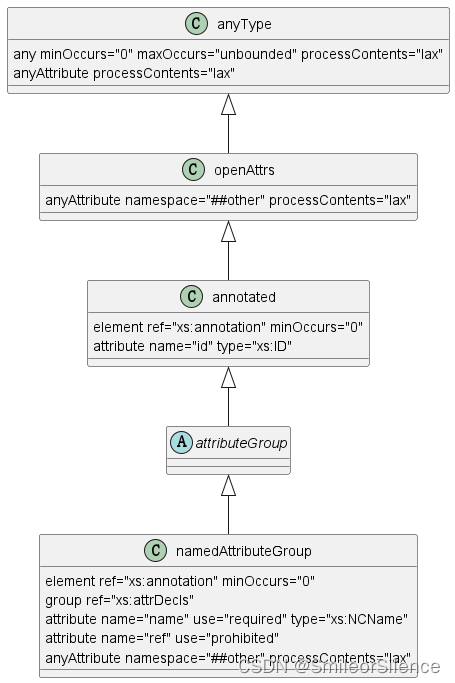
attributeGroup 类型是抽象(abstract=“true”)类型,从 annotated 类型扩展派生,新增了 attrDecls 元素组和 defRef 属性组。
<xs:complexType name="attributeGroup" abstract="true">
<xs:complexContent>
<xs:extension base="xs:annotated">
<xs:group ref="xs:attrDecls"/>
<xs:attributeGroup ref="xs:defRef"/>
</xs:extension>
</xs:complexContent>
</xs:complexType>
例如声明一个属性组 defRef,包含 name 和 ref 属性,然后在复合类型 customer 中引用:
<xs:attributeGroup name="defRef">
<xs:annotation>
<xs:documentation>
for element, group and attributeGroup, which both define and reference
</xs:documentation>
</xs:annotation>
<xs:attribute name="name" type="xs:NCName"/>
<xs:attribute name="ref" type="xs:QName"/>
</xs:attributeGroup>
attributeGroup 元素用于对属性声明进行组合,这样这些声明就能够以组合的形式合并到复合类型中。
<attributeGroup
id=ID
name=NCName
ref=QName
any attributes
>
(annotation?),((attribute|attributeGroup)*,anyAttribute?))
</attributeGroup>
元素类型 - element 类型
<xs:complexType name="element" abstract="true">
<xs:annotation>
<xs:documentation>
The element element can be used
either at the top level to define an element-type binding globally,
or within a content model to
either reference a globally-defined element
or type or declare an element-type binding locally.
The ref form is not allowed at the top level.
</xs:documentation>
</xs:annotation>
<xs:complexContent>
<xs:extension base="xs:annotated">
<xs:sequence>
<xs:choice minOccurs="0">
<xs:element name="simpleType" type="xs:localSimpleType"/>
<xs:element name="complexType" type="xs:localComplexType"/>
</xs:choice>
<xs:group ref="xs:identityConstraint" minOccurs="0" maxOccurs="unbounded"/>
</xs:sequence>
<xs:attributeGroup ref="xs:defRef"/>
<xs:attribute name="type" type="xs:QName"/>
<xs:attribute name="substitutionGroup" type="xs:QName"/>
<xs:attributeGroup ref="xs:occurs"/>
<xs:attribute name="default" type="xs:string"/>
<xs:attribute name="fixed" type="xs:string"/>
<xs:attribute name="nillable" type="xs:boolean" use="optional" default="false"/>
<xs:attribute name="abstract" type="xs:boolean" use="optional" default="false"/>
<xs:attribute name="final" type="xs:derivationSet"/>
<xs:attribute name="block" type="xs:blockSet"/>
<xs:attribute name="form" type="xs:formChoice"/>
</xs:extension>
</xs:complexContent>
</xs:complexType>
复合元素 - element 元素
复合元素指包含其他元素或属性的 XML 元素。
<xs:element name="employee" type="fullpersoninfo"/>
<xs:complexType name="personinfo">
<xs:sequence>
<xs:element name="firstname" type="xs:string"/>
<xs:element name="lastname" type="xs:string"/>
</xs:sequence>
</xs:complexType>
<xs:complexType name="fullpersoninfo">
<xs:complexContent>
<xs:extension base="personinfo">
<xs:sequence>
<xs:element name="address" type="xs:string"/>
<xs:element name="city" type="xs:string"/>
<xs:element name="country" type="xs:string"/>
</xs:sequence>
</xs:extension>
</xs:complexContent>
</xs:complexType>
通配符类型 wildcard
<xs:complexType name="wildcard">
<xs:complexContent>
<xs:extension base="xs:annotated">
<xs:attribute name="namespace" type="xs:namespaceList" use="optional" default="##any"/>
<xs:attribute name="processContents" use="optional" default="strict">
<xs:simpleType>
<xs:restriction base="xs:NMTOKEN">
<xs:enumeration value="skip"/>
<xs:enumeration value="lax"/>
<xs:enumeration value="strict"/>
</xs:restriction>
</xs:simpleType>
</xs:attribute>
</xs:extension>
</xs:complexContent>
</xs:complexType>
-
namespace
可选。规定包含可以使用的元素的命名空间。如果没有指定命名空间,则默认值是##any。如果指定命名空间,则取值必须是以下之一:##any- 来自任何命名空间的元素都可以出现##other- 来自该元素的父元素的目标命名空间之外的任何命名空间的元素都可以出现##local- 未由命名空间限定的元素可以出现##targetNamespace- 来自包含该元素的父元素的目标命名空间的元素可以出现{URI references of namespaces, ##targetNamespace, ##local}的列表 - 来自通过空格分隔的命名空间列表的元素可以出现。 该列表可以包含以下内容: 命名空间##targetNamespace和##local的 URI 引用。
-
processContents
可选。一个指示符,指示应用程序或 XML 处理器应如何根据由该any元素指定的元素处理 XML 文档的验证。 如果没有指定processContents属性,则默认为strict。如果指定了processContents,则取值必须是以下之一:strict- XML 处理器必须获得所需命名空间的架构,并且必须验证来自这些命名空间的所有元素lax- 与strict相同;但是,即使不能获取该架构,也不会发生任何错误skip- XML 处理器不尝试验证来自指定命名空间的所有元素
任何元素 - any 元素
any 元素是复合类型元素,类型是从 wildcard 类型扩展的派生类型。
wildcard 类型的 namespace 属性默认值是 ##any,使来自指定命名空间的任何元素可以显示在包含 sequence 或 choice 元素中。
该元素使创作者可以通过未被 schema 规定的元素来扩展 XML 文档。
<xs:element name="any" id="any">
<xs:annotation>
<xs:documentation source="http://www.w3.org/TR/xmlschema-1/#element-any"/>
</xs:annotation>
<xs:complexType>
<xs:complexContent>
<xs:extension base="xs:wildcard">
<xs:attributeGroup ref="xs:occurs"/>
</xs:extension>
</xs:complexContent>
</xs:complexType>
</xs:element>
<any
id=ID
maxOccurs=nonNegativeInteger|unbounded
minOccurs=nonNegativeInteger
namespace=namespace
processContents=lax|skip|strict
any attributes
>
(annotation?)
</any>
任何属性 - anyAttribute 元素
<xs:element name="anyAttribute" type="xs:wildcard" id="anyAttribute">
<xs:annotation>
<xs:documentation source="http://www.w3.org/TR/xmlschema-1/#element-anyAttribute"/>
</xs:annotation>
</xs:element>
anyAttribute 元素使创作者可以通过未被 schema 规定的属性来扩展 XML 文档。
注释 - annotation 元素
annotation 元素是一个顶层元素,规定 schema 的注释。
<xs:element name="annotation" id="annotation">
<xs:annotation>
<xs:documentation source="http://www.w3.org/TR/xmlschema-1/#element-annotation"/>
</xs:annotation>
<xs:complexType>
<xs:complexContent>
<xs:extension base="xs:openAttrs">
<xs:choice minOccurs="0" maxOccurs="unbounded">
<xs:element ref="xs:appinfo"/>
<xs:element ref="xs:documentation"/>
</xs:choice>
<xs:attribute name="id" type="xs:ID"/>
</xs:extension>
</xs:complexContent>
</xs:complexType>
</xs:element>
<xs:element name="appinfo" id="appinfo">
<xs:annotation>
<xs:documentation source="http://www.w3.org/TR/xmlschema-1/#element-appinfo"/>
</xs:annotation>
<xs:complexType mixed="true">
<xs:sequence minOccurs="0" maxOccurs="unbounded">
<xs:any processContents="lax"/>
</xs:sequence>
<xs:attribute name="source" type="xs:anyURI"/>
<xs:anyAttribute namespace="##other" processContents="lax"/>
</xs:complexType>
</xs:element>
<xs:element name="documentation" id="documentation">
<xs:annotation>
<xs:documentation source="http://www.w3.org/TR/xmlschema-1/#element-documentation"/>
</xs:annotation>
<xs:complexType mixed="true">
<xs:sequence minOccurs="0" maxOccurs="unbounded">
<xs:any processContents="lax"/>
</xs:sequence>
<xs:attribute name="source" type="xs:anyURI"/>
<xs:attribute ref="xml:lang"/>
<xs:anyAttribute namespace="##other" processContents="lax"/>
</xs:complexType>
</xs:element>
<annotation
id=ID
any attributes
>
(appinfo|documentation)*
</annotation>
可以包含 appinfo 元素(由应用程序使用的信息)和 documentation 元素(由用户读取或使用的注释或文本)。
appInfo 元素规定 annotation 元素中应用程序要使用的信息。该元素必须位于 annotation 中。
注释:应用程序使用在 appinfo 元素内提供的信息处理指令。
<appInfo
source=anyURL
>
Any well-formed XML content
</appInfo>
source 可选。一个 URI 引用,规定应用程序信息的来源。
documentation 元素在 schema 中输入文本注释。该元素必须位于 annotation 元素内。
source 可选。规定应用程序信息的来源。
xml:lang 可选。规定内容中使用的语言。
<xs:annotation>
<xs:appInfo>
W3School Note
</xs:appInfo>
<xs:documentation xml:lang="en">
This Schema defines a W3School note!
</xs:documentation>
</xs:annotation>

